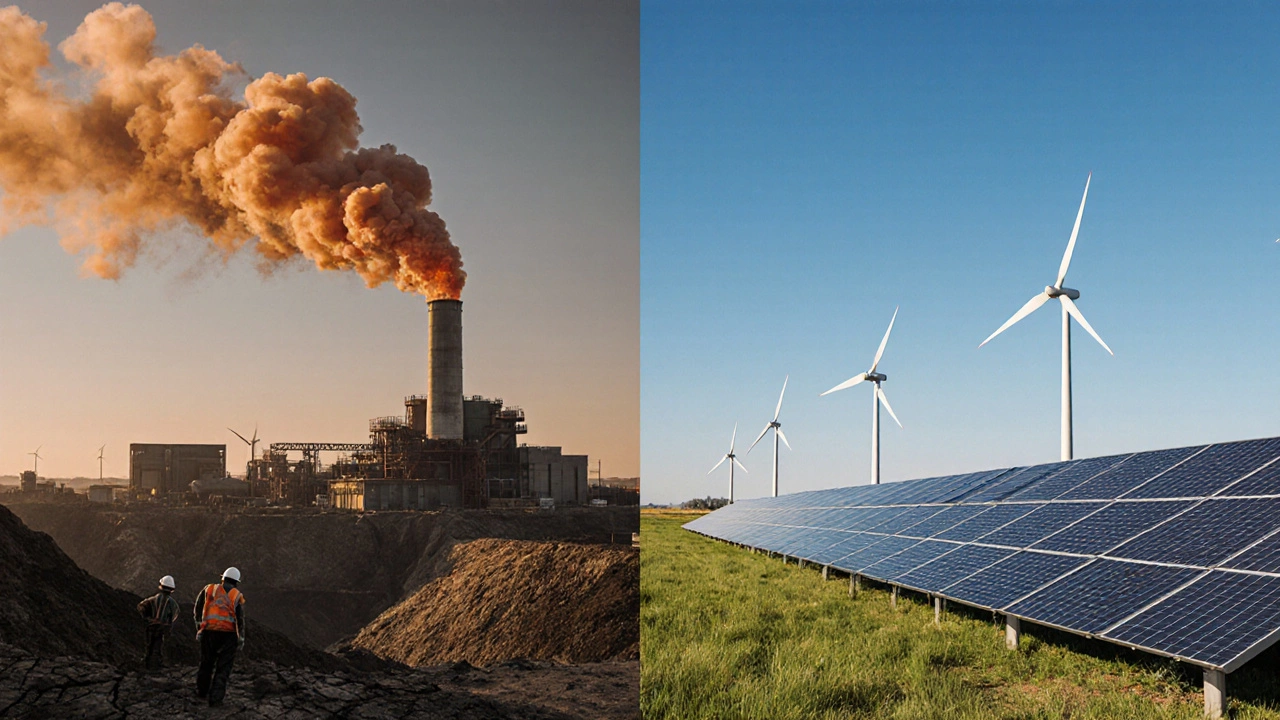Least Deadly Energy: What Makes Wind and Solar the Safest Choices
When we talk about the least deadly energy, energy sources with the lowest rate of human fatalities per unit of electricity generated. Also known as safest energy, it’s not about how clean the air looks—it’s about how many people die building, running, or maintaining the system. The answer isn’t what most people guess. It’s not nuclear, even though it feels scary. It’s not hydropower, even though dams can fail. It’s wind and solar.
Here’s the hard truth: coal kills. Not just from pollution, but from mining accidents, black lung disease, and the slow poisoning of entire communities. A 2021 study from the Journal of Hazardous Materials found coal causes 24.6 deaths per terawatt-hour of electricity. Nuclear? About 0.07. Hydropower? Around 1.3. Wind? Just 0.02. Solar? 0.03. That’s fewer deaths than falling off a ladder while hanging Christmas lights. Wind and solar don’t need dangerous mining, exploding boilers, or flood-prone dams. They don’t emit toxins. They don’t require workers to climb cliffs or dive into radioactive pools. They just sit there—on rooftops, in fields, over deserts—and turn natural forces into power.
That’s why India’s push for wind power, a renewable energy source that converts wind into electricity using turbines and solar energy, electricity generated from sunlight using photovoltaic panels or mirrors isn’t just about climate change. It’s about saving lives. Every time a village switches from diesel generators to solar panels, or a factory replaces coal boilers with wind-powered grids, fewer people get sick, fewer workers die in accidents, and fewer children breathe in soot. The data doesn’t lie: the cleanest energy is also the safest.
And it’s not just about the technology. It’s about the system. Wind and solar need fewer people on-site. They don’t transport fuel across dangerous routes. They don’t leave behind radioactive waste that lasts for millennia. They don’t require massive, fragile infrastructure that can collapse under pressure. That’s why even in remote parts of India—where roads are bad and medical help is far away—solar microgrids are quietly replacing kerosene lamps and diesel pumps. No explosions. No smoke. No poison.
What you’ll find in the posts below are real stories, clear numbers, and honest comparisons. You’ll see why wind power is the cleanest energy source based on emissions and land use. You’ll learn how solar is the fastest-growing energy source in 2025—and why that matters for safety. You’ll read about public health programs that cut air pollution and save lives. And you’ll understand how technology transfer isn’t just about moving gadgets—it’s about moving safety.




